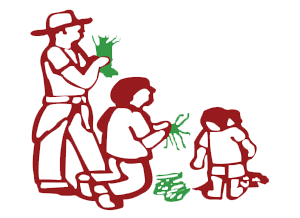From Airwaves to Agriculture: Campesinos Sin Fronteras Reaches Thousands with Pesticide Safety Education
- dsosa20
- Aug 13
- 3 min read
Updated: Aug 16
Overview
Campesinos Sin Fronteras (CSF), based in Yuma County, Arizona, has successfully completed a multi-year pesticide safety education initiative funded by a $126,000 Agricultural Community-Based Projects (AgCBP) grant from the Pesticide Educational Resources Collaborative (PERC). The project, titled Campesinos Pesticide Safety Training and Education Program, combined in-person training, bilingual educational materials, community radio, and social media to improve pesticide safety knowledge among farmworkers and their families.
Through this effort, CSF trained 612 Spanish-speaking farmworkers and pesticide applicators and reached thousands more with information designed to reduce pesticide exposure and improve health outcomes across rural and border communities.
Highlights
612 farmworkers trained in pesticide safety
3,499 reached through in-person outreach at community events
21,835 reached via Facebook and Instagram
3,024 radio PSA plays on KYMZ 99.9 FM – Radio Sin Fronteras
Trainings used EPA-approved bilingual WPS Flipcharts and a newly developed fotonovela
Visual, oral, and printed educational formats are used to support comprehension
Program Details
Project Goals
The goal of the Campesinos Pesticide Safety Training and Education Program was to reach and educate farmworkers, pesticide applicators, and their families on the risks of pesticide exposure and provide practical strategies to reduce incidents of illness and injury.
Training Approach
Outreach was tailored to the needs and schedules of agricultural workers, including early morning field visits, community-based events, and one-on-one education. CSF utilized materials in both Spanish and English, emphasizing images and real-life scenarios to improve clarity and engagement.
Key components included:
Bilingual WPS Flipchart: Safety Training for Agricultural Workers
CSF’s newly developed fotonovela, Evitando los riesgos en la casa: Cómo Protegernos de Pesticidas en Nuestro Hogar
16 radio PSAs covering pesticide safety topics, broadcast repeatedly on Radio Sin Fronteras
Social media outreach aligned with key Worker Protection Standard messages
Training delivered in-person at work sites, community centers, churches, schools, and CSF offices
Evaluation Outcomes
92% of participants had prior pesticide safety knowledge
100% demonstrated correct responses after training
Surveyed participants reported applying safety behaviors such as:
Changing clothes before entering the home
Washing work clothes separately
Avoiding entry into fields marked with warning signage
Participants also affirmed the value of the fotonovela and flipchart formats:
“I can’t read, but I can understand the story from the drawings.”
“The images are big, colorful, and clear—it’s easy to remember.”
What Made This Project Special?
Visual & Accessible Materials: Tools were selected to support learners with limited literacy and to foster family-wide conversations about pesticide safety.
Flexible Evaluation Methods: Pre- and post-training evaluations used verbal questions and “show of hands” to ensure participation across settings.
Strong Community Trust: CSF’s longstanding relationships with growers, promotores, and local institutions supported strong attendance and engagement.
About the Grantee
Campesinos Sin Fronteras is a trusted health and advocacy organization serving farmworkers and rural families in Yuma County. Their work focuses on education, prevention, and outreach across issues such as chronic disease, occupational safety, and pesticide exposure.
PERC thanks Campesinos Sin Fronteras PERC congratulates Campesinos Sin Fronteras on the successful completion of this
project. Their innovative use of fotonovelas, field-based training, radio, and community outreach offers a model for effective pesticide safety education in agricultural regions.
PERC thanks Campesinos Sin Fronteras
PERC congratulates Campesinos Sin Fronteras on the successful completion of this project. Their innovative use of fotonovelas, field-based training, radio, and community outreach offers a model for effective pesticide safety education in agricultural regions.

